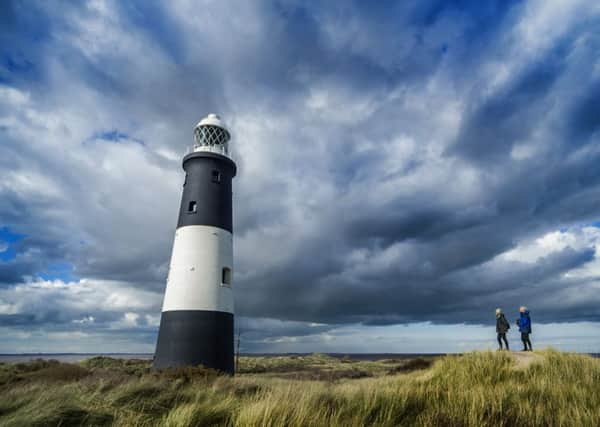A beacon of light that is still pointing the way


The Matthews lighthouse, beautifully photographed here, has stood at Spurn Point for more than 120 years, enduring all the slings and arrows the meteorological gods can hurl at it. This historic beacon, which ceased to be a working lighthouse in 1985, was built on the long, sandy spit that stretches three-and-a-half miles into the Humber Estuary from the Holderness Coast.
Spurn Point is a natural wonder characterised by chalky grasslands and mature sand dunes and is a Mecca for birdwatchers, drawn there by the many rare varieties and seasonal visitors.
Advertisement
Hide AdAdvertisement
Hide AdThe lighthouse itself has recently undergone a £470,500 restoration thanks to money from the Heritage Lottery Fund. For 90 years this historic landmark, which stands 128ft tall and can be seen from 17 miles away, guided vessels safely into the Humber Estuary.
But it was not the first sailors saviour built at this spot. There have been lighthouses at Spurn Point since 1427 because of the dangerous currents and sandbanks that lie beneath the Humber’s surface.
There is little record of what Spurn’s earlier lighthouses looked like, but we do know they have been built in pairs since 1674 and at least eight have been swept away during storms.
They were built in twos (called high and low lights) to help sailors navigate the notorious estuary. In 1852 the last, and still standing, low light was built.
Advertisement
Hide AdAdvertisement
Hide AdHowever, when the present lighthouse was built the low light was no longer needed as three additional lamps were placed in the body of the lighthouse instead. It has since been used as an explosive store and a water tower. Now it stands deserted.
Thomas Matthews designed the present lighthouse when the previous one was discovered to be cracking. It took nearly two years to build and was completed in 1895, and today it acts as a lasting testament to the skill of the great Victorian engineers.
Technical details: Nikon D3’s, Lens Nikon 12-24mm, aperture f/8, shutter speed 1/160s, ISO 1EV under 200.